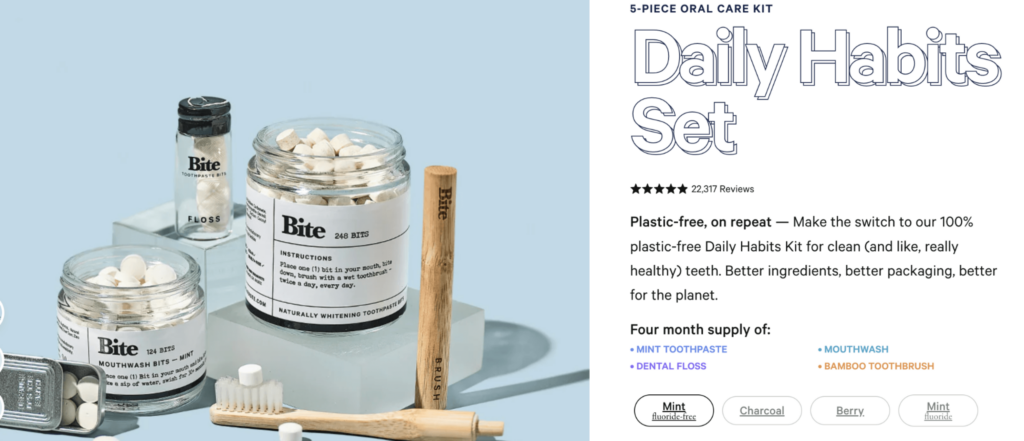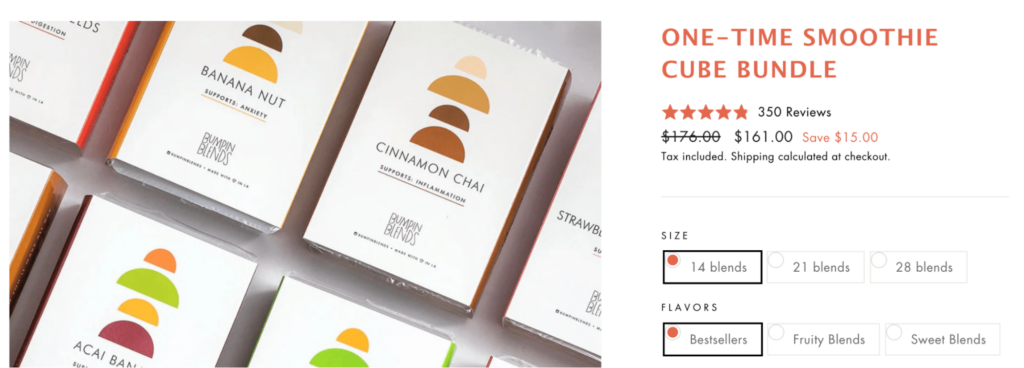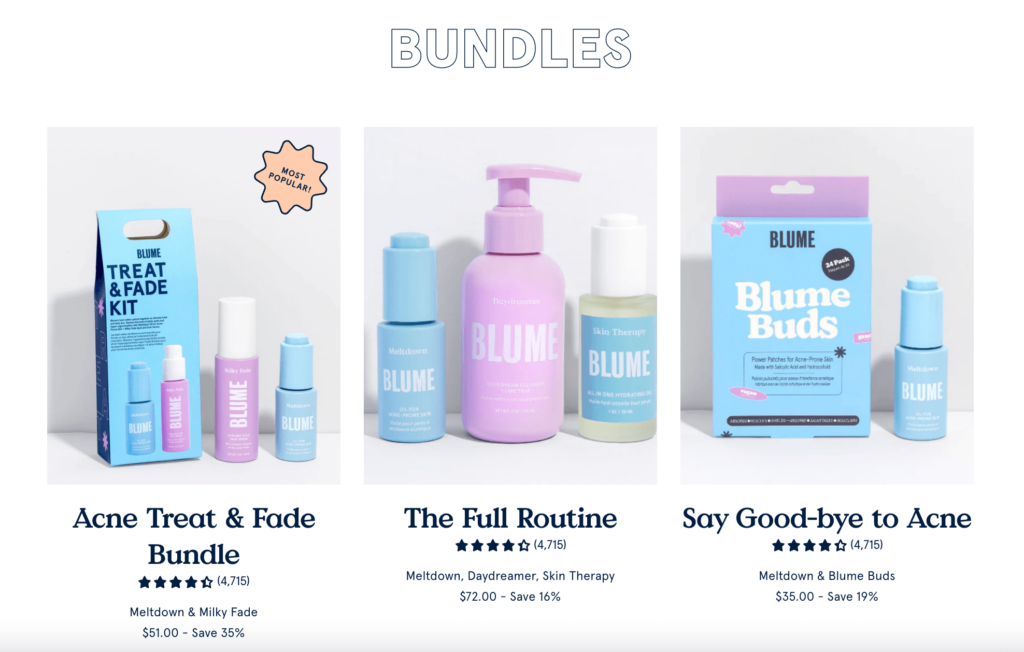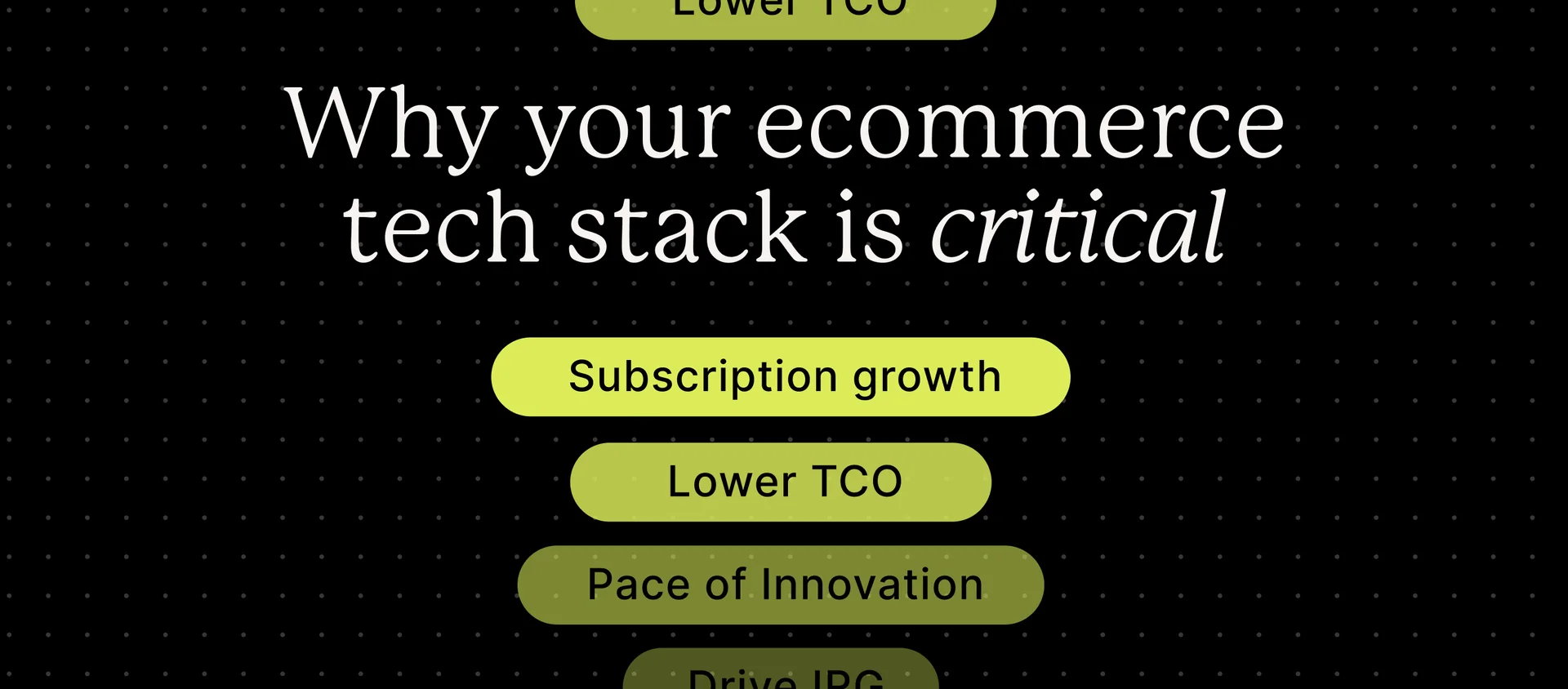So, you’ve made moves to optimize your ecommerce business and implemented bundles. But how do you know if you’re seeing the results you’d like? We’re going to dive into exactly that in this post—so your business can reap the benefits of product bundling.
Product bundles give customers the ability to build their own subscription box or choose from an assortment that has already been curated. They can push customers to spend a little more with your brand, while also making shopping easier. Bundles are a great solution for mature ecommerce companies, but it’s crucial to measure the success of your product bundling program.
When done well, bundles can increase customer satisfaction and retention, which is especially important with today’s high customer acquisition costs (CAC). In this post, we’ll be discussing practical tactics for measuring the success of your product bundling program and the different ways to improve your tracked metrics.

Key takeaways
- Product bundles can help brands increase AOV and customer satisfaction.
- Identifying key metrics to watch is critical for measuring the success of your bundling program.
- Tracking your product bundling performance can help you make adjustments that lead to more success.
How to measure the success of your product bundle program
Whether you are offering gift bundles, mix-and-match bundling, or pure bundles (meaning the items can only be purchased together, not separately), it’s crucial to create data-driven bundles. By continually analyzing and optimizing your bundle program, you can create bundles that are attractive to customers and help you bring in more revenue.
1. Defining key metrics
Before you can begin analyzing your product bundling success, you’ll have to first identify which key metrics you’d like to track. Based on your brand’s goals and objectives, you can determine which metrics are most relevant, and focus your attention on those. These key metrics can help you determine bundle pricing—including whether or not you should offer a product bundle at a reduced price—as well as which products should be put together in a bundle.
Typically, the most pertinent metrics to watch when selling product bundles are:
- Repeat purchase rate
- Customer satisfaction
- Average order value (AOV)
Your brand can select additional metrics to watch, too, if they pertain to your business goals. In the following sections, we’ll go over each of these three main metrics, including how your brand can track them to see how your bundles program is performing.

2. Measuring customer satisfaction
There’s no doubt that product bundling makes shopping easier for customers. With options to build their own subscription box—in other words, to create product bundles—merchants give shoppers the freedom to choose products and group them together how they want. Or, with pre-curated boxes, merchants can group popular products together, taking away the work of combining items.
But how do you measure customer satisfaction? It’s not an easy metric to analyze, which is why businesses will need multiple sources of feedback to consider how their product bundles are performing. Consider measuring satisfaction through customer surveys, reviews, and Net Promoter Score (NPS) to get a read on how satisfied customers are with their product bundles.
3. Tracking repeat purchase rate
The repeat purchase rate is a great metric to track to find out whether or not your product bundling is successful. By analyzing the rate at which customers make repeat purchases, you can determine if your bundling efforts are paying off. It can also help your brand determine which bundles are the most profitable and popular—leading to better business decisions down the road.
To track repeat purchase rates, your company can use analytics tools to identify customer patterns and behaviors. This data can help companies identify trends and patterns in purchasing behavior, such as the:
- Frequency of purchases
- Time between purchases
- Types of products that customers are buying together
Ecommerce businesses can also use customer segmentation to measure repeat purchase rates. Segmentation involves dividing customers into groups based on demographics, behavior, and other characteristics. Your brand can then analyze the purchasing behavior of each segment, and determine which segments are most likely to repurchase products. Then, you can target your marketing efforts accordingly.

4. Analyzing average order value
Product bundling is often implemented as a result of brands looking to increase their AOV, because it is a natural way to encourage customers to spend more money with your brand. For this reason, it’s one of the most popular metrics to track when it comes to determining the success of your bundling strategy.
To analyze AOV, you can use similar tactics to those used to measure repeat purchase rates. You’ll want to track customer analytics to see if AOV is improving after bundling has been implemented. You can also segment customers to dive deeper into their purchasing behaviors and also see which customers are spending more with each order—then focus on why.
Once you’ve determined the key to getting customers to spend more on average with your brand, thanks to bundles, you can continue making adjustments to your bundling strategy.
Improving your bundling analytics over time
Continuous improvement is essential if you want to achieve long-term product bundling success. Businesses must regularly review and refine their bundling strategies in order to ensure their offerings are satisfying customers and leading to higher AOV. Continuous improvement can also help brands find opportunities to improve customer satisfaction, increase revenue, and strengthen customer loyalty.
To effectively improve your product bundles, monitor and analyze metrics regularly so that you can inform future business decisions, including how you market your bundles and ways to optimize them.
For example, if you notice that customers who purchase a particular product are also buying another related product together, you can bundle those two products to increase sales and provide value to your customers. Alternatively, if you find that a particular bundle is not selling well, you can offer it at a discounted price or adjust the items within the bundle to better meet customer needs.
With these specific learnings, thanks to ongoing analyzing and optimization, you can increase profitability and better meet your customers’ needs.
Implementing successful product bundles
By defining key metrics, measuring customer satisfaction, tracking repeat purchase rate, and analyzing average order value, mature ecommerce companies can gain a deeper understanding of their product bundling program’s success and take steps to improve it over time.
Bundles offer a great opportunity to increase revenue and make shopping easier for customers—and with the right optimization along the way, you can create a highly successful bundling strategy for your ecommerce business.



